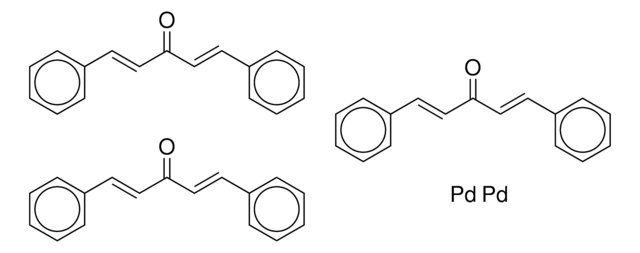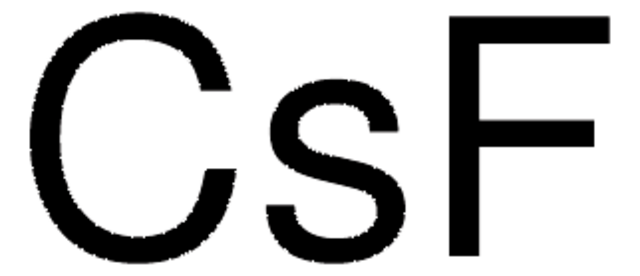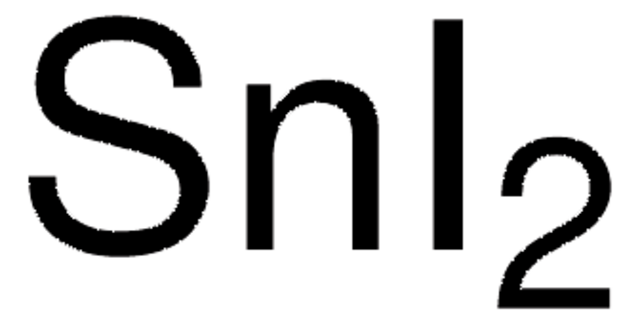554855
Carbonate de césium
99.95% trace metals basis
Synonyme(s) :
Acide carbonique, sel de dicésium
About This Item
Produits recommandés
Qualité
for analytical purposes
Niveau de qualité
Essai
99.95% trace metals basis
Forme
powder
Impuretés
≤550.0 ppm Trace Metal Analysis
Pf
610 °C (dec.) (lit.)
Chaîne SMILES
[Cs+].[Cs+].[O-]C([O-])=O
InChI
1S/CH2O3.2Cs/c2-1(3)4;;/h(H2,2,3,4);;/q;2*+1/p-2
Clé InChI
FJDQFPXHSGXQBY-UHFFFAOYSA-L
Vous recherchez des produits similaires ? Visite Guide de comparaison des produits
Application
Mention d'avertissement
Danger
Mentions de danger
Conseils de prudence
Classification des risques
Eye Dam. 1 - Repr. 2 - STOT RE 2 Oral
Organes cibles
Kidney,Adrenal gland,Testes
Code de la classe de stockage
13 - Non Combustible Solids
Classe de danger pour l'eau (WGK)
WGK 2
Point d'éclair (°F)
Not applicable
Point d'éclair (°C)
Not applicable
Équipement de protection individuelle
dust mask type N95 (US), Eyeshields, Gloves
Faites votre choix parmi les versions les plus récentes :
Déjà en possession de ce produit ?
Retrouvez la documentation relative aux produits que vous avez récemment achetés dans la Bibliothèque de documents.
Les clients ont également consulté
Articles
Professor Aran (Claremont University, USA) thoroughly discusses the engineering of graphene based materials through careful functionalization of graphene oxide, a solution processable form of graphene.
Colloidal quantum dots (CQDs) are semiconducting crystals of only a few nanometers (ca. 2–12 nm) coated with ligand/surfactant molecules to help prevent agglomeration.
Global Trade Item Number
| Référence | GTIN |
|---|---|
| 554855-50G | 4061833599167 |
| 554855-10G | 4061833483046 |
Notre équipe de scientifiques dispose d'une expérience dans tous les secteurs de la recherche, notamment en sciences de la vie, science des matériaux, synthèse chimique, chromatographie, analyse et dans de nombreux autres domaines..
Contacter notre Service technique




![[Pd(OAc)2]3 reagent grade, 98%](/deepweb/assets/sigmaaldrich/product/structures/508/249/99a0ef2c-b77c-4d73-8ed9-0cca05b6b41f/640/99a0ef2c-b77c-4d73-8ed9-0cca05b6b41f.png)






